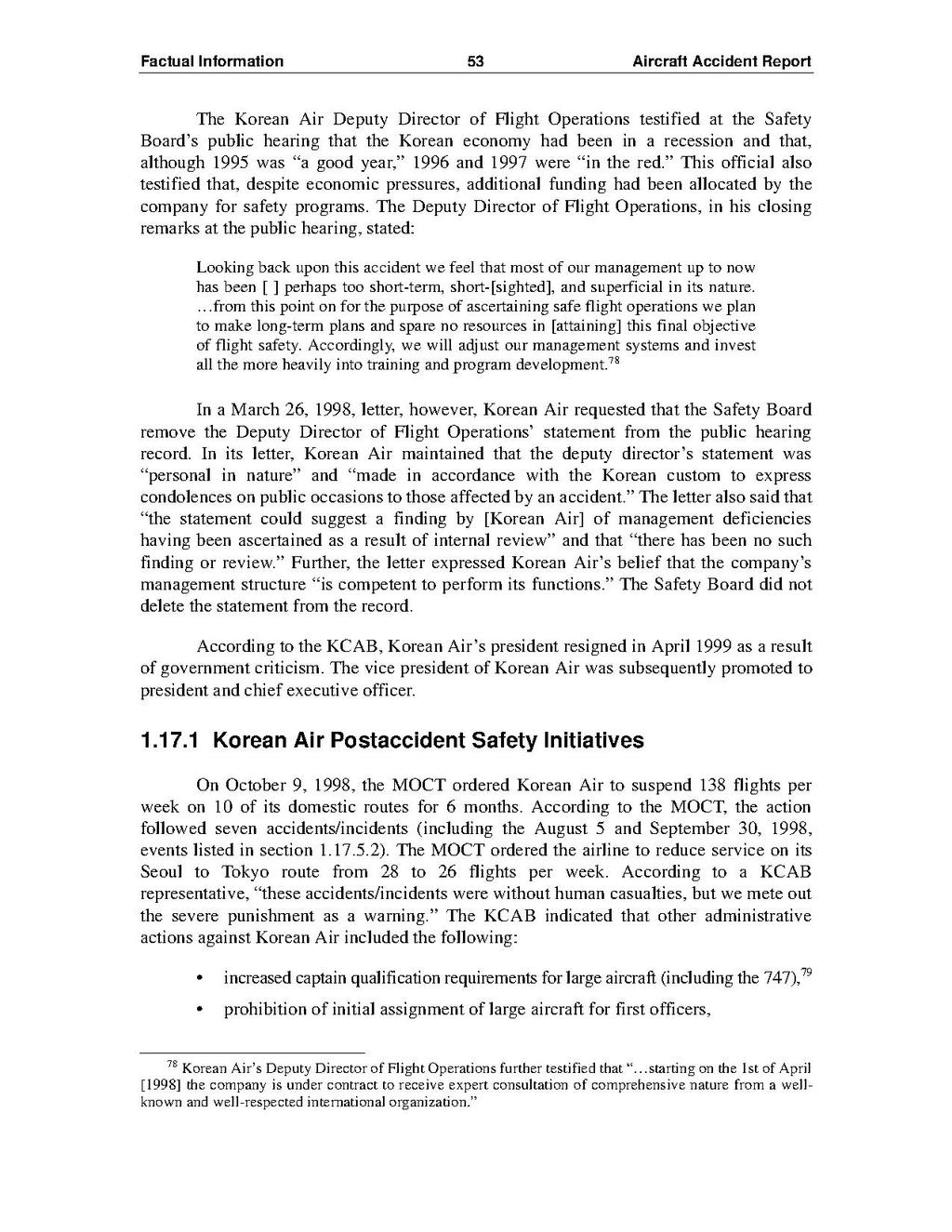The Korean Air Deputy Director of Flight Operations testified at the Safety Board's public hearing that the Korean economy had been in a recession and that, although 1995 was "a good year," 1996 and 1997 were "in the red." This official also testified that, despite economic pressures, additional funding had been allocated by the company for safety programs. The Deputy Director of Flight Operations, in his closing remarks at the public hearing, stated:
- Looking back upon this accident we feel that most of our management up to now has been [ ] perhaps too short-term, short-[sighted], and superficial in its nature. ...from this point on for the purpose of ascertaining safe flight operations we plan to make long-term plans and spare no resources in [attaining] this final objective of flight safety. Accordingly, we will adjust our management systems and invest all the more heavily into training and program development.[1]
In a March 26, 1998, letter, however, Korean Air requested that the Safety Board remove the Deputy Director of Flight Operations' statement from the public hearing record. In its letter, Korean Air maintained that the deputy director's statement was "personal in nature" and "made in accordance with the Korean custom to express condolences on public occasions to those affected by an accident." The letter also said that "the statement could suggest a finding by [Korean Air] of management deficiencies having been ascertained as a result of internal review" and that "there has been no such finding or review." Further, the letter expressed Korean Air's belief that the company's management structure "is competent to perform its functions." The Safety Board did not delete the statement from the record.
According to the KCAB, Korean Air's president resigned in April 1999 as a result of government criticism. The vice president of Korean Air was subsequently promoted to president and chief executive officer.
1.17.1 Korean Air Postaccident Safety Initiatives
On October 9, 1998, the MOCT ordered Korean Air to suspend 138 flights per week on 10 of its domestic routes for 6 months. According to the MOCT, the action followed seven accidents/incidents (including the August 5 and September 30, 1998, events listed in section 1.17.5.2). The MOCT ordered the airline to reduce service on its Seoul to Tokyo route from 28 to 26 flights per week. According to a KCAB representative, "these accidents/incidents were without human casualties, but we mete out the severe punishment as a warning." The KCAB indicated that other administrative actions against Korean Air included the following:
- increased captain qualification requirements for large aircraft (including the 747),[2]
- prohibition of initial assignment of large aircraft for first officers.
- ↑ Korean Air's Deputy Director of Flight Operations further testified that "...starting on the 1st of April [1998] the company is under contract to receive expert consultation of comprehensive nature from a wellknown and well-respected international organization."
- ↑ The increased requirements were a 2-year freeze period as a captain on small- and medium-sized aircraft in Korean Air's fleet, 500 landing cycles on small- and medium-sized fleet aircraft, 350 landing cycles on large fleet aircraft, and 4,000 hours of flight time with the company.
